
Types Of Casserole Pans: Which One Should I Use?
Soups made with chicken broth fight cold symptoms and improve immunity, while meat-based soups improve digestion. Hot soups warm the body and supply energy and cold soups are refreshing in hot weather and help control fluid balance. That's why soups are healthy to eat and prepare.
In this article, we'll tell you what kind of casseroles are available. What are the advantages of different materials, and how many casseroles you need at home.
Table Of Contents:
- What Tasks A Casserole Dish Fulfils.
- Classification By Size.
2.1 Small.
2.2 Medium.
2.3. Large.
- Typology By Purpose.
3.1 Universal.
3.2 Special.
- Types By Material.
- Non-Stick Pan.
- Requirements For The Lid.
- What The Handles Should Be.
- Features Of The Bottom.
- When A Pan Set Is Needed.
- Fissman Products.
- Top Models Of The Brand.
- Customer Reviews.
Casserole Uses
You can cook not only soups in casserole. In addition to your favourite chicken stock with noodles, herbs, and boiled eggs, you can make mashed potatoes, bratwurst, cereals, sauces for main courses and desserts, stewed vegetables, and even hot drinks. Christmas mulled wine, for example, can be prepared in it.
Functions of the pots:
- Long boiling (for soups, mushrooms, potatoes);
- Fast boiling (for eggs, sausages, dumplings);
- Braising (for vegetables, sautéed mushrooms);
- Baking in the oven (for meat and fish dishes, casseroles)
- Making juices, compotes, and jams (during the harvest season)
- Steaming (for diets without frying/oil).
Classification Of Cookware By Size
Buying a casserole is a fifteen-minute task if you know what to take. The first thing to decide on is the volume. If you look in the cupboard of an experienced cook, you will find at least three different pots. There are even more if you have children, health enthusiasts, and gardeners.
Let's look at the three basic types of pots by liter:
Small 1-3 liters - a small pan for quick cooking, mini portions, and children's meals. It's convenient to heat up dinner and prepare milk porridge and dumplings.
Medium 3 to 5 liters - a medium saucepan for full-fledged first meals. Such pots are used for soups, borscht, pea soup, mushroom soup, and vegetable soup for the whole family.
Large over 5 liters - a large pot for special occasions. This pot helps to cope with special occasions - preparing mushrooms, berries, or fruits in the forest.
Typology According To Purpose
Everyday life is often full of situations in which you do not know what to prepare a dish in. For example, béchamel sauce - the traditional French dressing for souffles and lasagne. It consists mainly of milk, flour, and fat. You can knead all the ingredients in a saucepan. A deep round container is also an excellent choice.
However, the variety of such containers is much wider. A distinction is made between universal and specialty pans. There is a difference in design and, therefore, in use between the two.
The universal ones:
- The classic soup pot is familiar to you. It has a deep metal bowl, two side handles, and a lid. You can boil/stew in it, and often, even bake a dish in the oven. The main thing is ensuring that the components are adapted to the high heat.
- The ladle is regarded as a smaller version of the universal soup ladle. Its small volume, long handle, and lid make it suitable for warming up batch cooking.
- Saucepans or sauté-pans are an innovative kind of saucepan. It differs from usual pans with a thicker body, lowered sides, and larger bottom volume. The handles are traditionally side-folded and heat-resistant. A lid is often included but is not obligatory. The specialty of the sauté pan is that it allows you to boil, braise, and fry.
Special:
- The steam cooker is a multi-pan for steaming food, indispensable in families where healthy eating habits and a health-promoting diet are followed. It consists of 2 to 5 metal tiers with perforated bottoms inserted into each other. The base is unperforated but has a hole for pouring/leaving water. When heated, the liquid turns into steam and rises, bringing the ingredients to full readiness. Such a pan requires no oil or vegetable/animal fat.
- A pressure cooker is the same as a steam cooker but highly specialized. It has a similar construction but is used for steaming dumplings and dumplings.
- Juice cooker - This is a seasonal pan for making compotes, natural juices made of berries/fruits. The same arrangement is made according to the tier principle. However, the bottom tier is for water, and the penultimate tier is for collecting the final product. This is fitted with an outlet pipe with a clamp to draw the extracted juice into a container for storage.
- The spaghetti pot has the classic structure (body, two handles, lid) but is complemented by an internal insert with a colander. This way, you can drain the boiled pasta immediately.
- The vegetable pot also has a classic design, but the bowl is more elongated, and the diameter of the bottom is narrower. This is convenient for boiling carrots, corn, beets, and other oblong vegetables.
- A domestic cauldron is not exactly a pot. Its outdoor counterpart is better known, but the domestic version is still only beginning to win the hearts of buyers. The peculiarity of a domestic vessel for pilaf is its reduced size, flat bottom, and availability of non-stick coating.
Types Of Pots By Material
|
Material |
Variety |
Description |
Pros of |
Features |
|
Cast iron |
Ordinary |
Plain Traditional heavy metal in black |
-Black color. - Impressive weight; - High stability; - Natural non-stick properties; - Long cooling with simultaneous languishing of the dish; - Reliability, durability; - Suitable for stove, oven; - For cooking, stewing, baking. |
- Requires calcination and application of the first protective layer of linseed oil by hand; - Requires regular cleaning from soot so as not to rust; - Hand wash only. |
|
Lightweight |
Lightweight Innovative material that is 50% lighter. |
- Half the weight of conventional cast iron; - Protected by a factory coating; - Not prone to corrosion; - reinforced by a ferromagnetic metal insert in the base; heats quickly; - Reliable, long-life; - Suitable for cooker, oven; - For boiling, braising. |
- Striking and modern design (handles made of natural wood, colored coating); - Does not need to be heated; - Non-stick layer made of ceramic/stone; - Easy to clean; does not stick. |
|
|
Enameled |
Enamelled cast iron with a glossy vitrified clay layer. |
- Clear or colored enamel on the inside and outside; - Not prone to corrosion; - reinforced with a ferromagnetic metal insert in the base; heats quickly; - Reliable, long-life; - Suitable for cooker, oven; - For boiling, braising, baking. |
- Enamel can withstand heat up to 300 degrees; - Does not need to be heated; - Non-stick layer made of ceramic/stone; - Easy to clean; does not stick. |
|
|
Glass |
Heat-resistant glass |
Thick, transparent glass, suitable for use at high temperatures. |
- Environmentally friendly material; - Does not absorb cooking odors; does not darken; - Smooth surface, easy to clean; - Uniform heating, long-lasting heat retention; - Durability; - Non-corrosive; - For boiling, stewing, baking (including microwave). |
- Fragile requires careful handling; - Cannot be subjected to temperature shock; - Compatible with glass-ceramic hobs/ovens/microwaves. |
|
Ceramics |
Heat-resistant Thick |
Natural, high-temperature fired ceramics with a glossy or matt glaze. |
- Environmentally friendly, safe material; - Preserves the unique taste of each ingredient; - does not require a non-stick coating; - Non-corrosive; - Aesthetically pleasing appearance; can be placed on the table; - For boiling, braising, baking. |
- Able to withstand temperatures up to 500 degrees Celsius; - Suitable for oven, gas, electric, and glass ceramic hobs - Dishwasher safe. |
|
Stainless Steel |
Without cover |
Traditional stainless steel with a high content of chrome that prevents corrosion. |
- 100% corrosion-resistant; - Beautiful glossy surface; - High mechanical resistance, difficult to scratch; - Fast, even heating; - At the right temperature, does not stick; - Inert to the contents of the food, does not change the taste, color, smell; - For boiling, stewing, baking, steaming, seasonal fruit and berry dishes |
- Does not need a protective coating; - Dishwasher-safe; - Can be cleaned with a baking soda paste in the case of scaling. |
|
Aluminum |
Non-stick coated aluminum |
Cast, forged or stamped metal with a protective top layer. |
- A modern type of safe aluminum cookware; - Protected by the factory-applied non-stick coating; - Metal does not come into contact with food; it does not change its composition, taste, or smell; - Heats quickly and evenly; - High mechanical strength; - Not prone to corrosion; - For boiling and braising. |
- Aesthetic design (available in black, grey, or colored); - Hand washable, does not retain bacteria - Does not require ignition/preparation for first-time use; - Ready to use immediately after purchase. |
Non-Stick Pan
Let's dwell on the latter option in more detail. After all, against the background of widely advertised stainless steel and good old-fashioned cast iron, the non-stick pan is often lost. Needless to say, it is still inferior to heat-resistant glass and ceramics. And for a good reason! It's a real boon for housewives.
In short, pots made of aluminum and cast iron with a protective coating are beautiful and practical. The inconspicuous but effective coating is up to 60 microns thick. It reliably covers the metal base in three to five layers, ensuring that the food does not stick to the bottom or the sides. It won't burn.
This brings several additional benefits to such cookware. For instance, they can be easily washed by hand with the most common gel, a soft sponge, and warm water. Cooking also can be done with little or no oil. And the factory protection also considerably extends the life of the product. This is a pot with a thick bottom, so handle it with care. Simply replace the stirring spatulas with silicone or wooden ones. Avoid abrasive scouring powders and hard sponges. Also, keep the pot dry, empty, and in a well-ventilated place.
Requirements For The Lid
We have become accustomed to the lid for saucepans being an accessory sold as a set. Indeed, such a set is now recognized as the standard. And yet, when buying a familiar product, pay attention to:
- The quality of the glass base - it should be flat, with no scratches, not dangling;
- The presence of a steam outlet - it is usually enclosed in a metal loop;
- Reliable shrinkage of the lid on the body - this is achieved by equipping it with a steel or silicone rim.
A sign of high quality is a pot with a glass lid made of impact-resistant, transparent glass that sits tightly on the container without slipping.
How You Want The Handles To Look Like
It seems to be quite simple. Most pots have two side handles, either solidly riveted or metal-clad. The handles themselves are made of the same material as the body. However, technology does not stand still. Manufacturers offer customers not only the usual standard. Today you can buy containers of three types.
- With metal handles. A classic variant, multifunctional. For the cooker and the oven. Highly mechanically sturdy.
- With heat-resistant plastic handles. The modern models. Holders made of Bakelite. It will not heat up nor melt. Only for the cooker.
- With silicone grip pads. The safest type of handle. The soft silicone grip doesn't get hot and won't slip.
- With removable handles. A versatile purchase for the cooker and the oven. The handles are made of thermoplastic, often with a pattern. Removable for baking.
There is also a ceramic pot with a lid. This type of cookware is intended mainly for baking in the oven. All components are made of ceramic to minimize heat loss, including the side holders.
Features Of The Bottom
This is an inconspicuous but very important detail. It is what makes or does not make the vessel suitable for different types of hobs. Induction, gas, electric, or ceramic hobs.
The secret lies in the design. To the human eye, it's simply a flat bottom surface. However, it either does or does not contain one important component - the ferromagnetic insert. It is a metal "pancake." The outer base is stainless steel, and the inside is an aluminum-based alloy. It speeds up the heating process and makes it uniform. In addition, the pancake is magnetic and therefore suitable for induction cookers.
Depending on this, there are two types of pan:
- The gas saucepan has no additional inner lining. Only suitable for gas, electric, and glass ceramic hobs.
- The induction cooker hob has a ferromagnetic insert. Suitable for all types of hobs, including induction hobs.
When You Need A Cookware Set
Experienced cooks can't lie: you can't make do with just one pan in the kitchen, no matter how universal it is. Sooner or later, two, three, or more pots appear in every home.
So, how many pots do you need? Above in the article, there is a classification of pots by volume. Chefs recommend having at least one of each category. That is 1-3, 3-5, and 5+ liters. However, consider individual needs. Someone may not need a 5-liter pot. Some may be unable to cope with the small amount. What to do?
You should buy the right saucepan set for your needs. Depending on your needs, today's sets include:
- 1-3 saucepans with lids;
- 2 pots, 1 ladle + lids.
A total of 6 items made in a single style and packaged for transport. This set is not only practical in everyday life. In its modern version, it is beautiful. Different colors, feel-good textures, safe materials, and protective coatings are its main advantages.
Fissman Products
FISSMAN pots take a special place in the brand's assortment. Understanding that it is one of the most popular kitchen utensils, the company constantly replenishes the line. Among products are presented:
- Steel saucepans;
- Cast aluminum pans with non-stick coating;
- Thick cast iron saucepans;
- Cookware made of light-weight and enameled cast iron;
- Heat resistant ceramic and glass vessels;
- Saucepan sets.
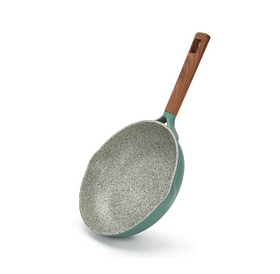
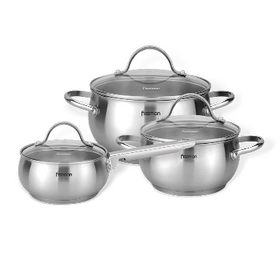
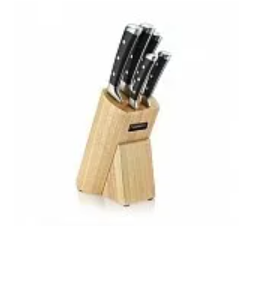
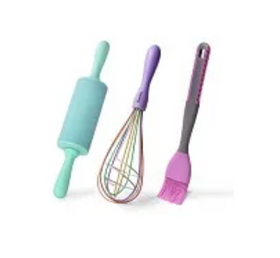

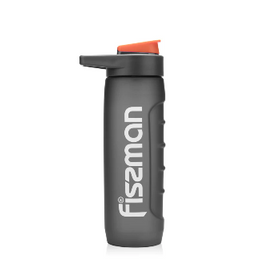
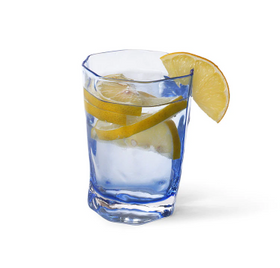































Leave a comment